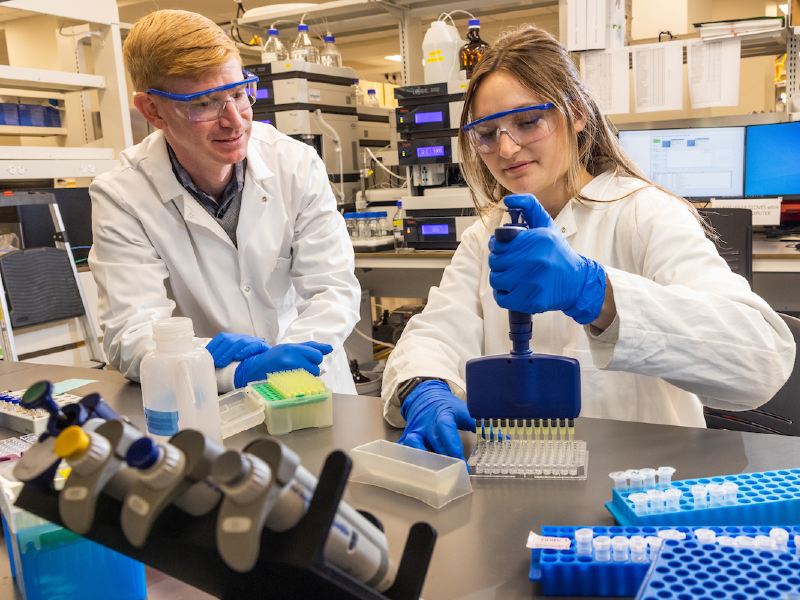
Andrew Jones
My Approach to Teaching and Learning
I chose to work at Miami University because of the unique opportunity to combine teaching and scholarship for maximum impact on my students, and best preparing them for their careers. A major component of my scholarly research is the training and development of undergraduate research assistants. Students often join my research group in their first year and work with me through graduation. The main goal of my research assistant training program is to develop young minds into creative and independent scientists who are well-prepared to make a professional impact in the scientific community both during and after their time at Miami. To accomplish this, I strive to involve all students in the research design and development process. Early in a student’s scientific career, I push them to design experiments and think critically about our research problems. I teach them the concepts of positive and negative experimental controls, the importance of experimental replicates, and how to control the scope of an experiment within time and resource limitations. As they advance, I urge them to pick a project they are passionate about and begin to design the overall project goals, not just the individual experiments. This level of in-depth engagement with novel research problems differentiates the Miami University undergraduate experience from other schools. This high-level engagement in research creates scientists with highly advanced critical thinking skills. Many of my undergraduate students are listed as co-inventors on patent applications, as well as lead and co-authors on peer-reviewed publications.
My Teacher-Scholar Journey
My lab develops novel engineered microbes with unique abilities to synthesize high-value specialty chemicals in an economically competitive and environmentally sustainable way. Recently, we have focused on the production of a class of well-known, frequently psychedelic, natural products called tryptamines, (e.g., psilocybin, DMT). These compounds are the focus of dozens of clinical studies for treatment of mental disorders such as depression and anxiety. My students and I work as a team to devise biochemical engineering strategies that maximize production of these target compounds through minimization of cellular metabolic burden and efficient use of limited cellular resources. I find the diverse perspectives of my less-experienced students uniquely valuable. They are far more likely to question established norms, leading to research directions that are frequently more simplistic and functional than those I would devise on my own. I credit much of the success of my research program to a combination of hard-working and creative students guided and questioned by my experience and expertise in the field. This intertangling of ideas and perspectives in my research group has led to 85% (22 of 26) of patent applications originating in my lab having student co-inventors, and effectively all peer-reviewed publications having student co-authors. Our work has been highlighted with a range of awards to my students and myself at the university (PSAAA three-time winner, Junior Faculty Scholar Award), state (Ohio Faculty Council Technology Commercialization Award), and national (AIChE’s 30 Under 30, NSF Graduate Research Fellowship two-time winner) level.
Knowledge is Power
“Miami University gives faculty the resources and support to train students to deeply engage with hard, real-world problems. This hands-on, teacher-scholar engagement with students is what prepares Miami alumni to be leaders in their chosen career fields.”
Education
Ph.D. Rensselaer Polytechnic Institute
M.S. Mercer University
B.S.E. Mercer University
More About Me
I am a biochemical engineer who focuses on modifying bacteria to perform high-value chemical production. My research has been highlighted on National Public Radio and in print publications such as Chemical & Engineering News, Vice News, High Times, and Scientific American. My students and I have published over 25 peer-reviewed publications in top journals that have been cited over 2,300 times since 2014.